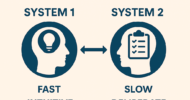An innovative study in JAMA Internal Medicine on surrogate decision making has profound implications for how we take care of older hospitalized patients. The study, by Lexy Torke and colleagues at Indiana University, systematically described the involvement of surrogates in decision making for hospitalized patients.
Surrogate decision making refers to the phenomenon in which someone other than the patient is making or helping to make the key medical decisions. In older patients, the surrogate decision maker is usually a family member, either a spouse or adult child.
Torke proves that surrogate involvement in decision making is much more common and extensive than previously described. Most prior work has focused on surrogate decision making in the ICU and at the end of life. But Torke shows that surrogates are extensively involved in decision making in less severely ill patients on the general medical wards. Further, surrogates are involved in much more than end of life decision making. They help make a wide spectrum of medical decisions ranging from whether to consider a medical procedure to discharge planning.
This study examined 1083 patients over age 65 admitted to the general medical wards and ICU at 2 Indianapolis hospitals. These patients were identified by their physicians as needing to make at least one major medical decision. The key findings were as follows:
- Nearly half of patients (47%) required at least some surrogate involvement in major medical decisions. About half of the time, the surrogate made all of the decisions. The other half of the time, the surrogate and patient jointly made the decisions.
- Surrogate decision making is not just for ICUs! As expected, surrogate decision making was particularly common in the ICU, but even on the medical wards, surrogates were involved in over 40% of major decisions.
- Surrogate decision making is not just about code status! Surrogates were instrumental in many decisions that had profound short and long term consequences for the patient’s care. 49% of surrogates participated in decisions about procedures about operations and 47% of surrogates helped make decisions about discharge planning.
As noted in an eloquent commentary by Yael Schenker and Amber Barnato, we need to start thinking much more “upstream” about surrogate decision making, preparing for surrogate involvement long before the end of life. They note that the common question, “Who would you want to make decisions for you if you were no longer able to make them yourself?” fails to account for the complexity of decision making. So, it is better to ask, “Who would you want to be involved in decisions about your care?” and “How would you like us to involve them?”
Torke’s study has major implications for how we organize hospital care, which often completely fails to account for the HUGE role played by family members and friends of the patient in the decision making process. As noted by Torke:
The current hospital structures and routines of daily bedside rounds are built on the assumption that the patient can provide historical information and make decisions independently. Perhaps because of this, there are substantial barriers to communication for surrogate decision makers. In the hospital, family members are considered “visitors” rather than crucial participants in their family member’s care.
We need hospital processes and structures that recognize families as much more than “visitors.”
Ken Covinsky is a professor of medicine, University of California, San Francisco who blogs at GeriPal.






















![Antimicrobial resistance: a public health crisis that needs your voice [PODCAST]](https://kevinmd.com/wp-content/uploads/Design-1-190x100.jpg)

